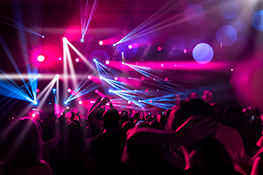The Ultimate Guide to Stage Lighting Design: From Beginner to Pro
Understanding the Fundamentals of Stage Lighting
Stage lighting is more than just illuminating a stage; it’s a powerful storytelling tool. This guide will walk you through the essentials, from basic principles to advanced techniques, helping you master the art of crafting captivating lighting designs. We’ll cover everything from choosing the right fixtures to understanding color temperature and creating dynamic lighting cues.
Beginners should start by grasping the key elements: intensity (how bright the light is), color (the hue and saturation), direction (where the light comes from), and distribution (how the light spreads). Understanding how these elements interact is crucial for creating effective lighting plots.
Types of Stage Lighting Fixtures: A Comprehensive Overview
The world of stage lighting offers a vast array of fixtures, each with its unique capabilities. This section provides a detailed breakdown of common fixture types, their applications, and their strengths and weaknesses.
- Ellipsoidal Reflector Spotlights (ERS): Known for their sharp beams and precise control, ideal for highlighting specific areas or actors.
- Fresnel Lenses: Produce a soft-edged, easily adjustable beam, perfect for washes and general illumination.
- PAR Cans: Simple, robust, and cost-effective, offering a wide beam suitable for backlighting and washes.
- LED Lighting: Energy-efficient and versatile, offering a wide range of colors and effects. We’ll discuss different LED types and their suitability for various applications.
- Moving Lights: Automated fixtures that allow for dynamic and complex lighting effects, including gobos, color changes, and beam shaping.
Choosing the right fixture depends on your budget, the size of your stage, and the specific effects you want to achieve. This guide provides a detailed comparison chart to assist in your selection process.
Mastering Color Temperature and Color Mixing
Color temperature is a critical aspect of stage lighting. Measured in Kelvin (K), it affects the mood and atmosphere of your production. Understanding the difference between warm (lower K) and cool (higher K) light is crucial for creating the desired ambiance.
This section will delve into the art of color mixing, explaining how to achieve specific colors using different combinations of gels or LED color mixing. We will cover color wheels, color theory, and practical techniques for creating harmonious and dramatic color schemes.
Lighting Design Software: Tools for the Modern Designer
Modern stage lighting design relies heavily on specialized software. This section explores popular lighting design software, explaining their features and functionalities. We’ll look at how these programs help you create and visualize lighting plots, ensuring seamless execution during performances.
We’ll cover topics such as:
- Creating Lighting Plots: Learn how to effectively plan and visualize your lighting setup using software.
- Programming Lighting Cues: Master the art of creating dynamic lighting sequences and transitions.
- Visualizing your Design: Explore the use of 3D modeling and simulation tools within lighting design software.
Advanced Techniques: Shaping Light and Creating Atmosphere
This section dives into advanced lighting techniques that can elevate your designs to a professional level. We’ll explore:
- Light Shaping: Using barn doors, gobos, and other accessories to control the shape and direction of light.
- Creating Atmosphere: Using lighting to evoke specific emotions and moods, from suspense to joy.
- Special Effects: Exploring techniques for creating strobe effects, chases, and other dynamic lighting elements.
Troubleshooting Common Lighting Issues
Even experienced designers encounter technical challenges. This section provides practical advice on troubleshooting common lighting problems, ensuring smooth operations during productions.
This comprehensive guide provides the foundation for a successful career in stage lighting design. Whether you are a beginner or a seasoned professional, you will find valuable insights and techniques to enhance your skills and create breathtaking lighting designs. Remember to always prioritize safety when working with electrical equipment.


 Auditorium Construction Services
Auditorium Construction Services 